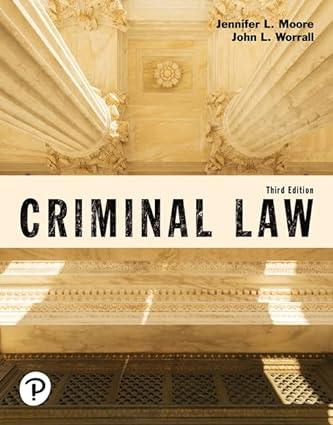Question
The landlord maximizes his income. Specifically, the landlord solves the following program: max h,l eH+(1e)0(eh+(1e)l) such that e argmax e^ e^h+(1e^)l1/2ce^ 2 eh+(1e)l1/2 ce 2
- The landlord maximizes his income. Specifically, the landlord solves the following program:
maxh,leH+(1e)0(eh+(1e)l)
such that
e argmaxe^e^h+(1e^)l1/2ce^2
eh+(1e)l1/2 ce20
What is the second constraint:eh+(1e)l1/2ce20
called?
a. Tenant's PC
b. Landlord's Participation Constraint (PC)
c. Tenant's IC constraint
d. Landlord's Incentive Compatibility (IC) constraint
Q. Assume that the second constraint holds with a equality (if it did not, the landlord loses income). Note that you have already solved the first constraint(eT=h-l/c)
argmaxe^e^h+(1e^)l1/2ce^2
Now, solve the landlord's optimization problem given the two constraints. What is the level ofhl
chosen by the landlord? Your answer should be a function ofH,c
only.
[Hint: Plug in the constraints into the landlord's profit function and rewrite the maximization problem as the landlord choosing(hl) instead ofh andlseparately]
Step by Step Solution
There are 3 Steps involved in it
Step: 1

Get Instant Access with AI-Powered Solutions
See step-by-step solutions with expert insights and AI powered tools for academic success
Step: 2

Step: 3

Ace Your Homework with AI
Get the answers you need in no time with our AI-driven, step-by-step assistance
Get Started


